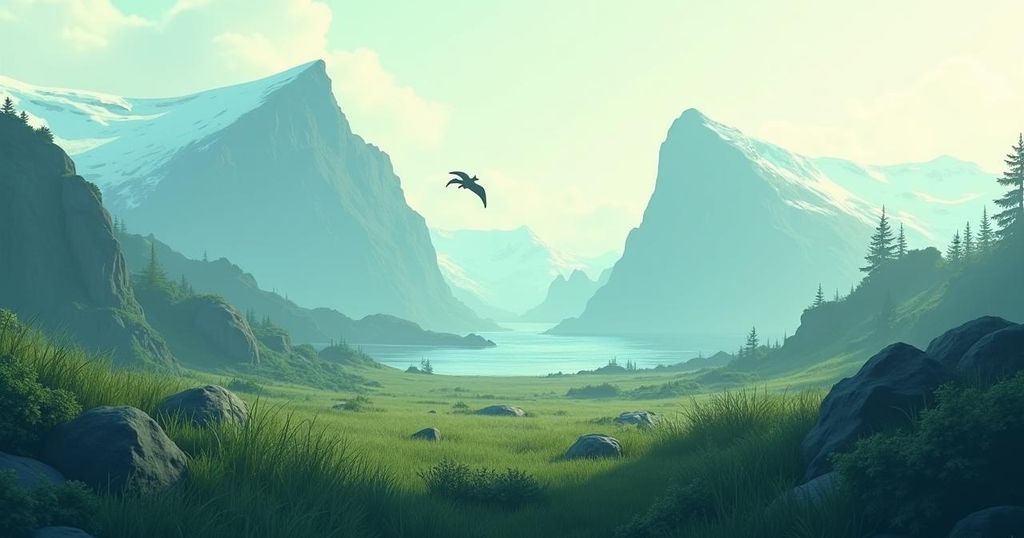Antarctic Peninsula Experiences Tenfold Increase in Vegetation Over Four Decades

A study by the British Antarctic Survey has revealed that vegetation on the Antarctic Peninsula has increased more than tenfold in the last 40 years, with a particularly sharp rise observed from 2016 to 2021. This greening trend reflects significant ecological changes due to climate change, raising concerns about future biodiversity and the introduction of invasive species in the region.
In a significant development, Antarctica is witnessing a remarkable increase in its green cover. Researchers affiliated with the British Antarctic Survey have undertaken an analysis of satellite imagery pertaining to the Antarctic Peninsula, revealing that the area covered by vegetation has soared over tenfold in a mere four decades. Specifically, the extent of plant life increased from less than 1 square kilometer in 1986 to nearly 12 square kilometers by 2021. Alarmingly, this trend is accelerating, with a more than 30% rise in greening observed between 2016 and 2021. Dr. Thomas Roland of the University of Exeter, one of the co-authors of the study published in Nature Geoscience, stated, “The plants we find on the Antarctic Peninsula – mostly mosses – grow in perhaps the harshest conditions on Earth.” Although the overall landscape remains predominantly characterized by snow, ice, and rock, it is clear that even this remote region is experiencing the effects of anthropogenic climate change. The polar areas of our planet have warmed at a rate twice that of the global average since the onset of the industrial revolution. Notably, the Antarctic Peninsula, which extends from West Antarctica toward South America, has experienced more significant warming in the latter half of the 20th century than any other location in the southern hemisphere. Dr. Olly Bartlett from the University of Hertfordshire further emphasized that as these ecosystems mature and the climate continues to warm, the scope of vegetative expansion is likely to increase. “Soil in Antarctica is mostly poor or non-existent, but this increase in plant life will add organic matter and facilitate soil formation – potentially paving the way for other plants to grow,” Dr. Bartlett noted. However, such changes also pose risks; there is an increasing chance of non-native and invasive plant species entering the region, potentially transported by eco-tourists, researchers, or other visitors. Dr. Roland added, “The sensitivity of the Antarctic Peninsula’s vegetation to climate change is now clear and, under future anthropogenic warming, we could see fundamental changes to the biology and landscape of this iconic and vulnerable region. Our findings raise serious concerns about the environmental future of the Antarctic Peninsula, and of the continent as a whole. To protect Antarctica, we must understand these changes and identify precisely what is causing them.”
The Antarctic Peninsula, often referred to as the White Continent, is an area that is experiencing significant ecological changes due to climate change. The rising global temperatures have had a pronounced impact on polar regions, which are warming at a rate double the global average. This shift has been particularly notable on the Antarctic Peninsula, prompting scientists to investigate the implications for the region’s unique ecosystem, which is composed predominantly of mosses and other hardy plant life flourishing under harsh climatic conditions. Understanding the extent and implications of these changes is vital for predicting future environmental outcomes.
The findings of the study underscore the growing vulnerability of the Antarctic Peninsula due to climate change, emphasizing an increase in vegetation cover by over ten times in recent decades. This development raises serious concerns regarding the ecological balance of the region, as warmer temperatures potentially lead to the introduction of invasive species. Continued monitoring and a deeper understanding of the causes behind these changes are essential for the preservation of this fragile and critical environment.
Original Source: cosmosmagazine.com






